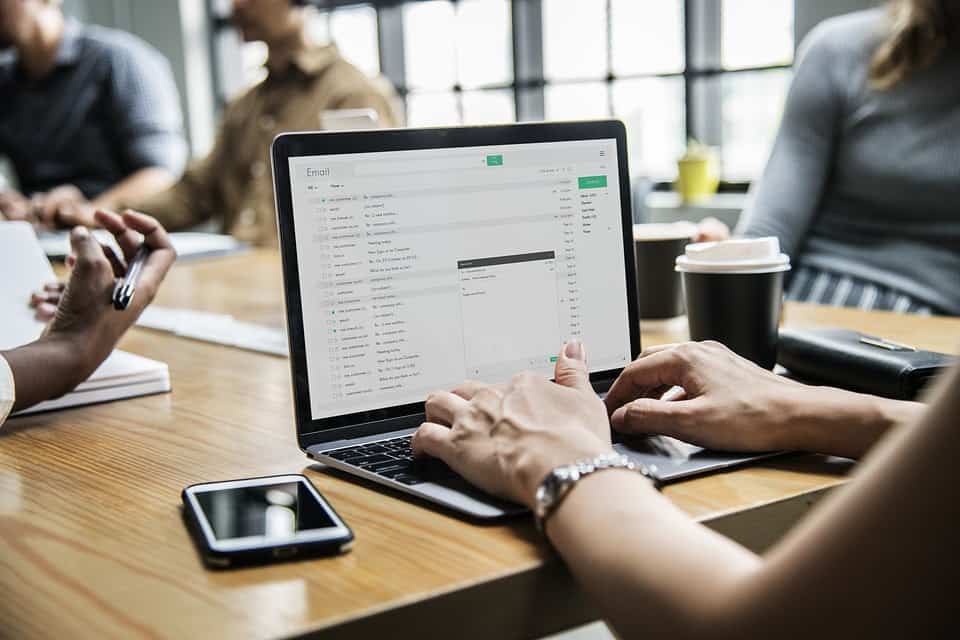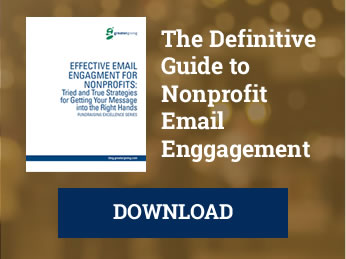
This post is the second in a series designed to teach the fundamentals of email marketing for nonprofits. These posts are based on the Effective Email Engagement for Nonprofits: The definitive guide to better nonprofit email marketing. Each post focuses on an element of conducting an email marketing campaign, from crafting email to measuring recipient responses and adjusting your email approach accordingly.
Refresh Your Nonprofit Email Marketing with These Tips
With the lack of time that most nonprofits face, email marketing can be a powerful tool for connecting with supporters. Through email, you can share impactful stories, provide pressing updates, and inspire support with compelling calls to action.

Thanks to its cost-effectiveness and broad reach, email empowers nonprofits to nurture a community of supporters who will do anything to see the organization succeed. Creating an inspiring email marketing program means you can share insightful content that’ll develop a loyal supporter base and expand your reach — but only if you put plenty of thought into your approach.
If your emails aren’t meeting expectations, it may be time to overhaul your marketing plan. Whether you want to increase event signups or simply educate your audience, you’ll boost open
rates in no time. Here are five ideas that will help refresh your marketing efforts:
- Brainstorm Creative Ways To Acquire Subscribers
- Segment Your Audience To Send Relevant Appeals
- Craft Compelling Subject Lines
- Include a Call to Action in Every Email
- Make Your Nonprofit Email Marketing Program Sustainable
Following these tips means connecting with your audience on a deeper level and driving more meaningful actions. If you’re ready to revitalize your email marketing efforts, let’s dive in.
Brainstorm Creative Ways To Acquire Subscribers
First things first: you need subscribers to send your email content to! If your email subscriptions are lacking, get creative with your approach to building your subscription list.
The best way to accomplish this is through omnichannel marketing. Essentially, market your email content to your audiences across existing channels. The end goal will be to funnel users to your email subscription list. Here are some creative acquisition strategies you might not have considered:
- The Google Ad Grant: Create a dedicated landing page where visitors can subscribe to your email list on your nonprofit’s website. Then, use free advertising credits from the Google Ad Grants program to advertise this page. You can target relevant keywords and create ads highlighting the benefits of joining.
- Social Media: Leverage the widest-reaching platforms at your disposal: social media. Use your nonprofit’s accounts to promote exclusive content available to email subscribers. Then, encourage followers to subscribe to your email list to access it.
- Pop-Up Forms and Opt-In Boxes: Include pop-ups or opt-in boxes on key pages and forms, like your homepage. Educational content like blog posts can also be great for building your subscriber list.
- Webinars and Events: Both online and offline events are perfect for acquiring subscribers. Host virtual events where you require attendees to register with their email addresses. At in-person events and conferences, create physical sign-up sheets or use tablets to capture subscriptions on the spot.
If open rates among your existing audience are dwindling, that’s a sign that they may not check their emails or have set up new ones. In that case, you can use email address appending to acquire the most recent emails for them.
In any case, always remember to explain the value subscribers will receive from joining your email list. Respect privacy and adhere to relevant data protection regulations. Doing so means you can expand your email subscriber base and nurture a community of engaged supporters.
Segment Your Audience To Send Relevant Appeals
Segmentation separates your recipients into lists so you can customize the frequency, timing, and content you send to each list. It’s a great way to keep recipients interested in your emails long-term and inspire action.
Segment your subscriber list into different groups as you learn how your recipients respond to your emails. Some segments will require different variations of the same email or different emails entirely.
To get started, we recommend grouping email lists based on different criteria, such as:
- Type of Support: Create groups like donors, volunteers, advocates, and event attendees. That way, you can send relevant involvement opportunities, such as upcoming events to past attendees or updates on advocacy efforts to advocates.
- Level of Support: Go deeper by grouping people based on their level of support. Are they long-term event attendees, or have they attended one fundraising event? Are they first-time, recurring, or major donors? Defining this will help personalize communications.
- Demographics and Preferences: You can also segment supporters based on demographic information such as age, location, or interests. This enables customization of content and appeals that resonate with specific groups.
Note that different segments will likely overlap, so use your best judgment when crafting outreach.
Regardless, your email content needs to be highly personalized. It’s not enough to add the recipient’s name to each email. You need to send content relevant to their interests. Then, you need to include targeted calls to action, encouraging them to get involved by acting in ways that align with past support. Using your email software, you can create meaningful groups like the ones above to accomplish this.
Craft Compelling Subject Lines
Your supporters’ inboxes are booming with online shopping ads, social media notifications, and more. As they scroll, make your emails stand out with compelling subject lines.
As Getting Attention’s nonprofit digital marketing guide explains, “When someone’s scrolling through their inbox, your subject line will be what either reels them in or prompts them to delete the email without even opening it. Take time to craft a subject line that piques recipients’ interest and explains the content of your email.”
Attention-grabbing subject lines are concise, intriguing, and relevant to the recipient. That’s partially where segmentation comes in handy! Some quick tips to spark curiosity and boost open rates include:
- Be concise. Keep subject lines short and straightforward to grab recipients’ attention. Mailchimp research suggests using nine words and 60 characters at most.
- Create a sense of urgency: Use action verbs and time-sensitive words like “Take Part,” “Join,” or “Donate Now” to encourage recipients to open the email.
- Be transparent. Ensure subject lines accurately reflect the content of the email and align with recipients’ expectations, so they’re not confused when they open it.
- Avoid spam triggers. Steer clear of spam triggers like excessive capitalization, excessive use of exclamation marks, or overly promotional language.
If it fits your nonprofit’s brand, you can also try out fun strategies like emojis. This can be a great way to add a pop of color to your subject lines. In any case, keep an eye on your open rates to determine which subject line types drive more interactions.
Include a Call to Action in Every Email
Each email you send should inspire supporters to take a specific action. What meaningful next step do you want someone to take after reading your email?
Kwala’s guide to nonprofit newsletters explains that anything a supporter can do to further your mission can be an effective call to action. That could mean donating, purchasing event tickets, signing a petition, registering to volunteer, or downloading a resource.
As you draft each email, think through the step you want them to take. It should correlate with one of your goals, such as boosting event revenue or recruiting volunteers. Then, follow these tips to make your CTAs compelling:
- Strategically place your CTAs throughout the email. Your primary CTA should be visible without scrolling, ensuring recipients see it immediately upon opening the email. Then, include additional CTAs after key sections to reinforce your suggested next step.
- Use contrasting colors to make your CTAs stand out. Contrasting colors can make your CTA buttons pop. Choose contrasts that align with your color scheme for the best results.
- Use actionable language to instill a sense of urgency. Use strong verbs, urgency-inducing language, and emotional appeals to motivate people to click your CTA.
In turn, you’ll create effective call-to-action buttons that inspire recipients. Otherwise, you’re not fully leveraging all opportunities to push your mission forward.
Make Your Nonprofit Email Marketing Program Sustainable
One of the most dispiriting moments is realizing you’ve oversold yourself and can’t meet expectations. Something will have to give, and you don’t want it to be your email marketing program.
After all, long lapses may lead subscribers to forget they ever signed up in the first place, and a sudden email after months of silence often brings a wave of un-subscriptions.
Be realistic about what time investment is possible for you. Set out to do something manageable from the outset, and you’ll find room to grow. As you get started, here are some ways you can make your email plan sustainable:
- Don’t over-promise. Especially at the beginning of a new journey, we feel so inspired that the possibilities seem endless. But when you overextend, it’s easy to underperform—which could be worse for an email program in the long term.
- Start small and scale up your operations. It’s better to start out sending less frequently and learn from your mistakes than to bombard your supporters with poor emails and risk losing them early.
- Create templates to streamline your outreach. Maybe you’ll have templates for nonprofit volunteering announcements, event invitations, or programmatic updates. Having outlines ready to go means you can fill in key details and fire when ready.
A sustainable marketing plan isn’t one that costs you everything. Whatever approach you take with your program shouldn’t be so time intensive that it gets in the way of your existing work. So build systems that simplify your communications and enable you to grow your program as needed.
Wrapping Up
Managing an email marketing program takes some effort, but it’s not something your nonprofit should try to do without. After all, email can drive incredible results for your team. Tons of marketers even claim that it has the highest ROI among any channel.
From perfecting your subject lines to tying each email to specific actions, you should have plenty of ideas for freshening your email marketing efforts. Now, get started and increase your open rates!
